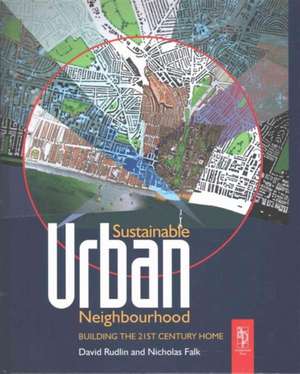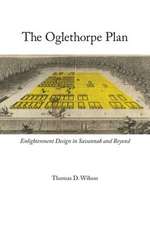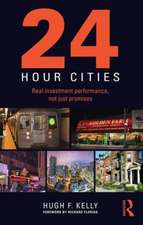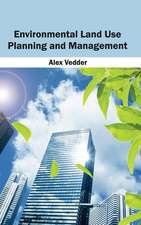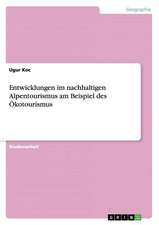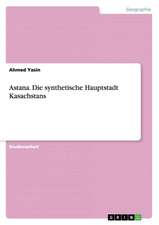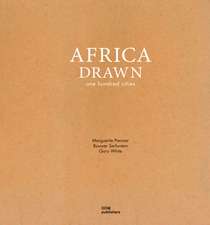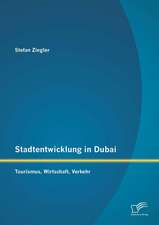Sustainable Urban Neighbourhood
Autor David Rudlin, Nicholas Falken Limba Engleză Hardback – 31 mar 2016
The book reviews the way that planning policies, architectural trends and economic forces have undermined the viability of urban areas in Britain since the Industrial Revolution. Now that much post-war planning philosophy is being discredited we are left with few urban models other than garden city inspired suburbia. Are these appropriate in the 21st century given environmental concerns, demographic change, social and economic pressures? The authors suggest that these trends point to a very different urban future.
The authors argue that we must reform our towns and cities so that they become attractive, humane places where people will choose to live. The Sustainable Urban Neighbourhood is a model for such reform and the book describes what this would look like and how it might be brought about.
Preț: 772.04 lei
Preț vechi: 1243.96 lei
-38% Nou
Puncte Express: 1158
Preț estimativ în valută:
147.73€ • 154.56$ • 122.72£
147.73€ • 154.56$ • 122.72£
Carte tipărită la comandă
Livrare economică 03-17 aprilie
Preluare comenzi: 021 569.72.76
Specificații
ISBN-13: 9781138173569
ISBN-10: 1138173568
Pagini: 338
Dimensiuni: 189 x 246 mm
Greutate: 0.89 kg
Ediția:Revised
Editura: Taylor & Francis
Colecția Routledge
Locul publicării:Oxford, United Kingdom
ISBN-10: 1138173568
Pagini: 338
Dimensiuni: 189 x 246 mm
Greutate: 0.89 kg
Ediția:Revised
Editura: Taylor & Francis
Colecția Routledge
Locul publicării:Oxford, United Kingdom
Public țintă
Professional Practice & DevelopmentCuprins
Introduction Part 1: The Origins The Flight from the City. Lost Utopias. The Taming of the City. The Shaping of the English Home. The Urban Renaissance Part 2: The Influences Conservation: Environmental Pressures on Future Settlements. Choice: Changing Household Characteristics and the 21st Century Home. Attitudes to Urban Areas. Community: Social Sustainability in the Suburb and City. Cost: The Economies of Urban Development Part 3: The Sustainable Urban Neighbourhood Urban Repopulation. The Eco-Neighbourhood. Urban Building Blocks. The Sociable Neighbourhood. A Model Neighbourhood? The Process of Urban Generation and Regeneration
Recenzii
Reviews of first edition:
'The Sustainable Urban Neighbourhood is the best analysis I have read of the crisis of the contemporary British city. This book offers a chance to rethink our priorities, break the cycle of decline and to create sustainable cities suitable for citizens.'
Richard Rogers
'There are many books published now with a revisionist urban programme, but Rudlin and Falk's is one of the best and most comprehensive.'
The Architect's Journal
'The Sustainable Urban Neighbourhood is the best analysis I have read of the crisis of the contemporary British city. This book offers a chance to rethink our priorities, break the cycle of decline and to create sustainable cities suitable for citizens.'
Richard Rogers
'There are many books published now with a revisionist urban programme, but Rudlin and Falk's is one of the best and most comprehensive.'
The Architect's Journal
Descriere
This successful title, previously known as 'Building the 21st Century Home' and now in its second edition, explores and explains the trends and issues that underlie the renaissance of UK towns and cities and describes the sustainable urban neighbourhood as a model for rebuilding urban areas.
The book reviews the way that planning policies, architectural trends and economic forces have undermined the viability of urban areas in Britain since the Industrial Revolution. Now that much post-war planning philosophy is being discredited we are left with few urban models other than garden city inspired suburbia. Are these appropriate in the twenty-first century given environmental concerns, demographic change, social and economic pressures? The authors suggest that these trends point to a very different urban future.
The authors argue that we must reform our towns and cities so that they become attractive, humane places where people will choose to live. The Sustainable Urban Neighbourhood is a model for such reform and the book describes what this would look like and how it might be brought about.
The book reviews the way that planning policies, architectural trends and economic forces have undermined the viability of urban areas in Britain since the Industrial Revolution. Now that much post-war planning philosophy is being discredited we are left with few urban models other than garden city inspired suburbia. Are these appropriate in the twenty-first century given environmental concerns, demographic change, social and economic pressures? The authors suggest that these trends point to a very different urban future.
The authors argue that we must reform our towns and cities so that they become attractive, humane places where people will choose to live. The Sustainable Urban Neighbourhood is a model for such reform and the book describes what this would look like and how it might be brought about.
